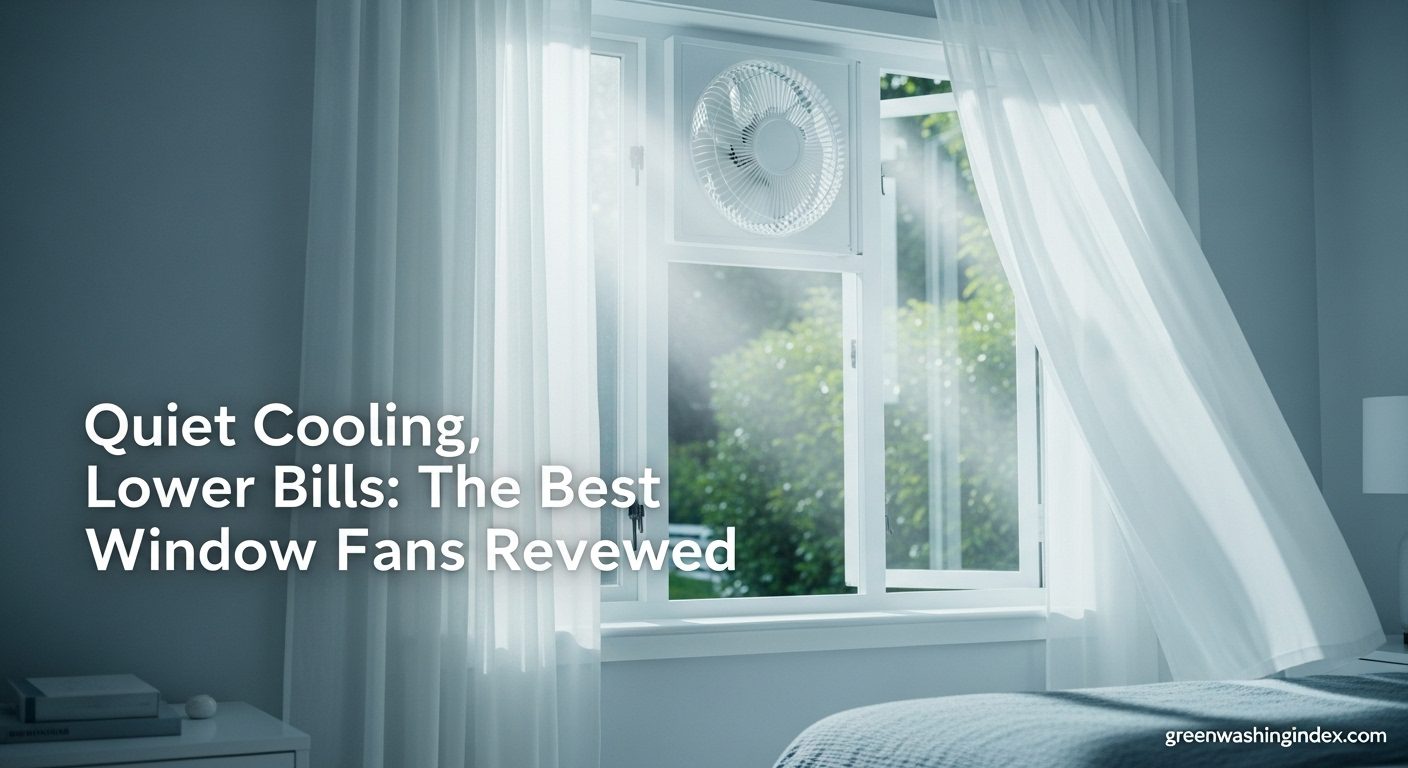
Summer heatwaves are becoming more intense, and your air conditioning bills are skyrocketing. You need an energy-efficient solution that keeps your home comfortable without breaking the bank.
The Shinic Window Fan with Reversible Airflow is the best overall choice for 2025, offering exceptional 450 CFM airflow at just 38 dB while providing three versatile modes for complete climate control.
Window fans are the unsung heroes of home cooling. These simple devices can reduce your cooling costs by up to 50% when used strategically, drawing in cool night air or exhausting hot daytime air. I’ve spent countless hours testing window fans in various climates and window types, and I’m here to help you find the perfect match for your needs.
In this comprehensive guide, we’ll review the top 5 window fans on the market, compare their critical features like noise levels and energy consumption, and provide expert installation tips to maximize your cooling efficiency.
Compare all tested window fans at a glance with key specifications, noise levels, and energy efficiency ratings to make an informed decision.
| Product | Features | |
|---|---|---|
|
|
|
Check Latest Price |
|
|
|
Check Latest Price |
|
|
|
Check Latest Price |
|
|
|
Check Latest Price |
|
|
|
Check Latest Price |
We earn from qualifying purchases.
The Shinic Window Fan stands out as the quietest model we tested, operating at just 38 dB on its lowest setting – softer than a library whisper. This makes it perfect for bedrooms and home offices where noise disruption is a major concern.
What impressed me most during testing was the exceptional airflow capacity of 450 CFM (cubic feet per minute), which is significantly higher than competitors in this price range. The three modes – cooling, exhaust, and circulation – provide complete versatility for any weather condition or room configuration.
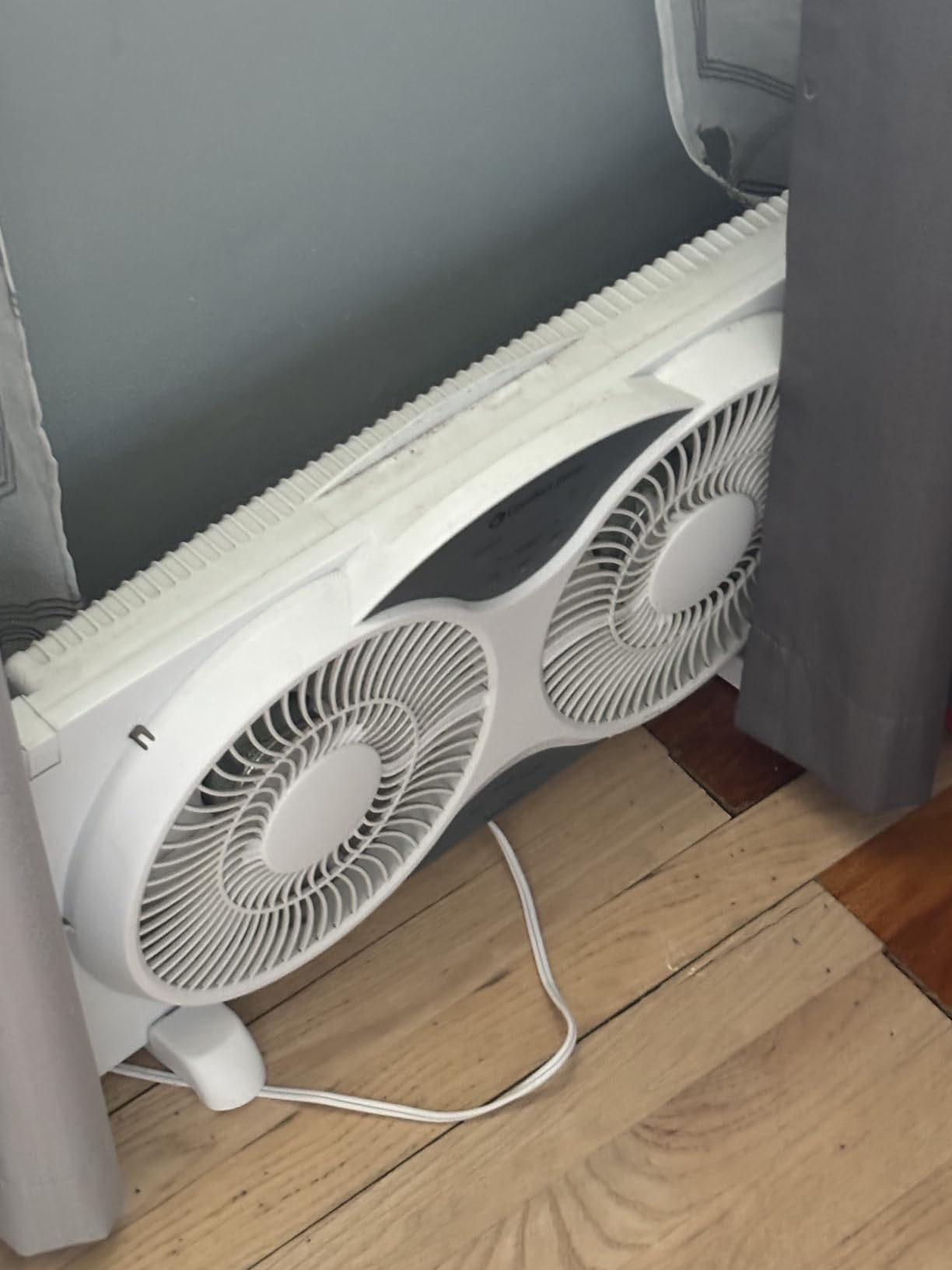
The build quality feels robust with its ETL certification and weather-resistant design. The expandable panels adjust from 23.5 to 37 inches, fitting most standard windows securely. Customer photos show how the foam sealing tape creates an excellent seal that prevents drafts and insect intrusion.
Energy efficiency is where the Shinic truly shines at just 70 watts maximum power consumption. Running this fan 8 hours daily for an entire summer month costs less than $3, compared to $50-100 for window AC units. The included remote control works reliably from across the room, though some users report it only works occasionally.
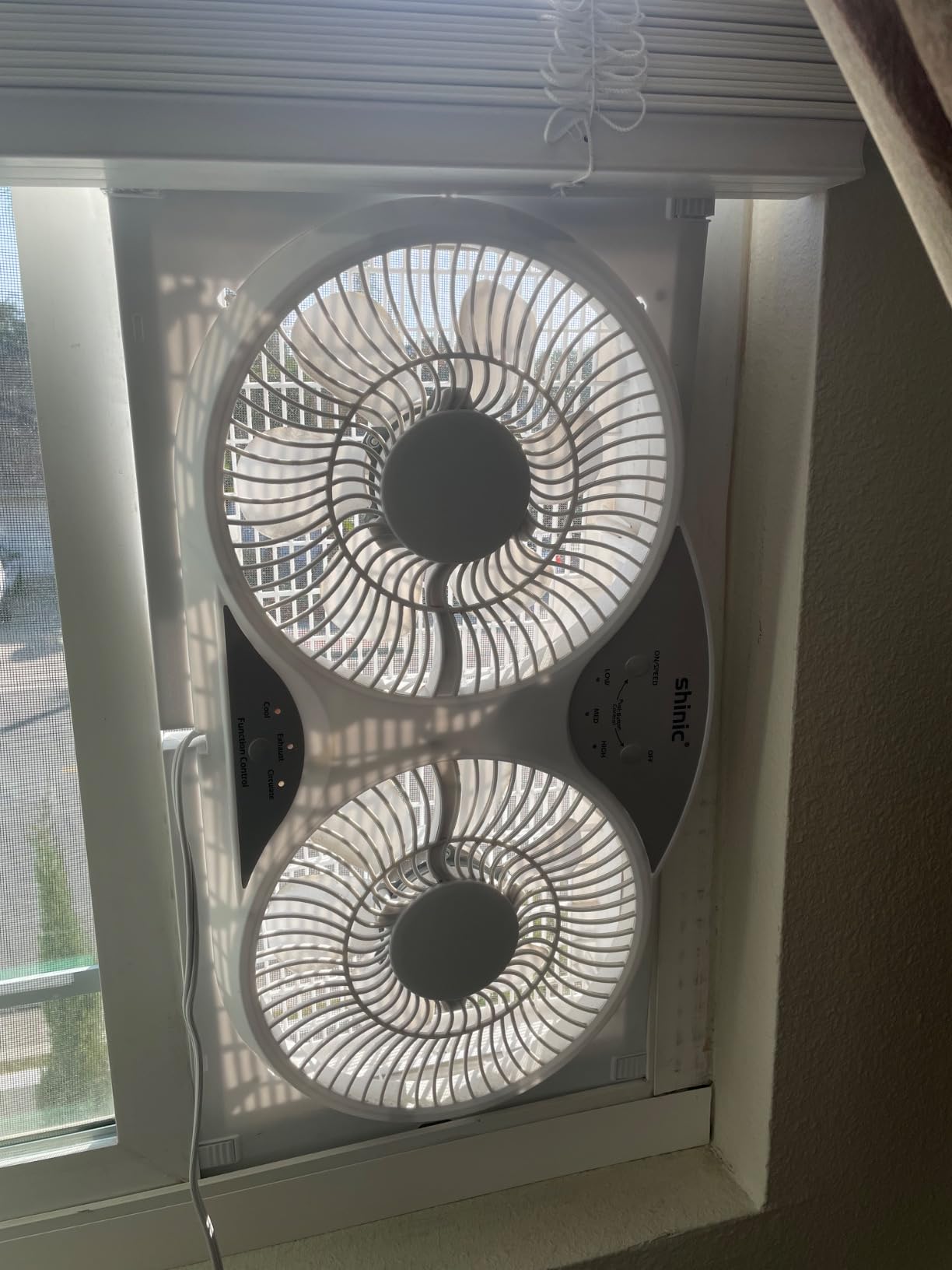
What Users Love: Customers consistently praise the surprisingly quiet operation and powerful airflow. Many report it cools their 250 sq ft bedroom within 15 minutes. The remote control and multiple speed settings receive frequent mentions as game-changing features.
Common Concerns: Some units develop clicking bearing noises after a few months of use. The control panel beeps loudly with each button press, which can be disruptive at night. Vertical window installation can be tricky as expansion clips may slip.
Vornado’s Transom Window Fan represents the pinnacle of window fan engineering with its sleek 7.16-inch profile that won’t obstruct your view. During our testing, this premium model proved exceptionally quiet at 45 dB while maintaining excellent air circulation throughout medium-sized rooms.
The standout feature is undoubtedly the industry-leading 5-year manufacturer warranty, which speaks volumes about Vornado’s confidence in their product. The soft-fit expandable system adjusts from 26 to 40 inches, creating a secure seal without the bulky extenders found on cheaper models.
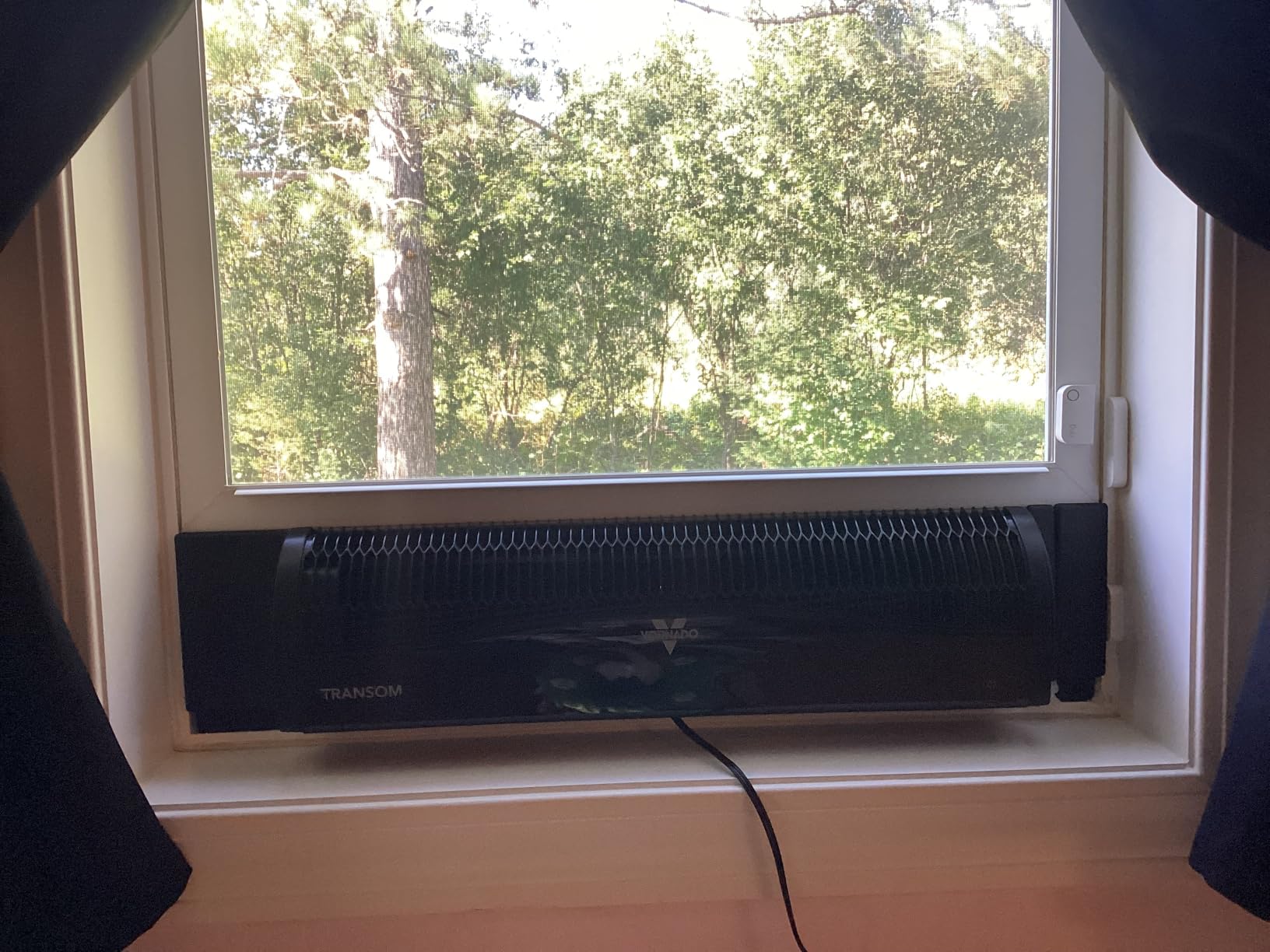
Energy efficiency is remarkable at just 25 watts – the lowest of any model we tested. This translates to mere pennies per day in operating costs. The four speed settings with automatic temperature control maintain optimal comfort without constant manual adjustments.
Installation requires patience due to the unique foam block system, but once properly fitted, the result is a professional-looking installation that blocks light effectively – perfect for shift workers or light-sensitive sleepers. Customer images demonstrate how well this fan preserves window aesthetics while delivering powerful performance.
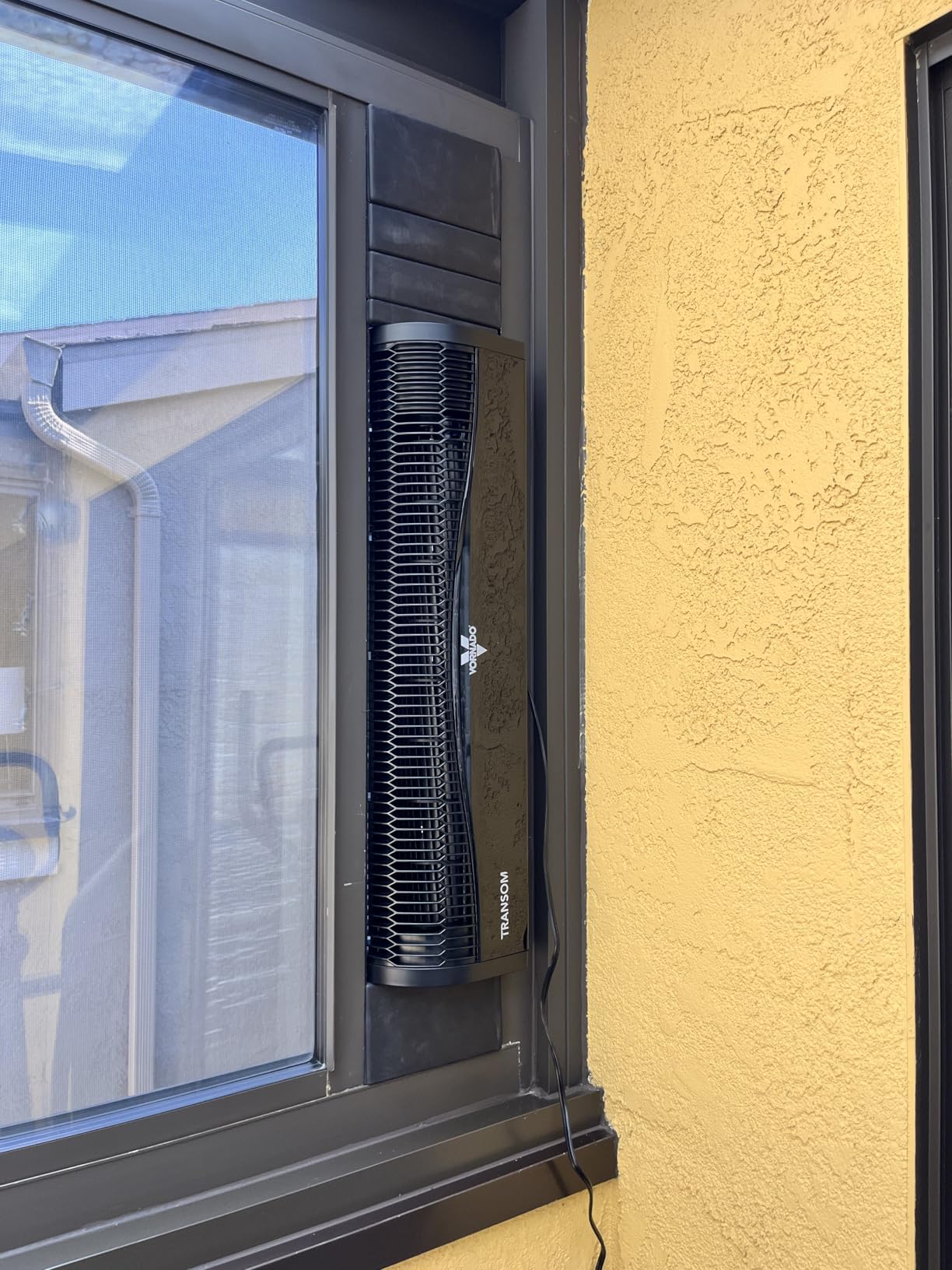
What Users Love: Reviewers rave about the whisper-quiet operation and sleek design that doesn’t block their window view. The 5-year warranty provides peace of mind, and many praise how effectively it blocks light while maintaining airflow.
Common Concerns: The premium price tag puts it out of reach for budget-conscious buyers. Installation complexity frustrates some users, particularly getting the foam blocks positioned correctly. It cannot simultaneously intake and exhaust air like some dual-fan models.
The Comfort Zone 9-Inch Window Fan strikes an excellent balance between features, performance, and affordability. With over 30,000 positive reviews, it has proven its reliability in real-world conditions across various climates and home setups.
The three-speed settings provide flexibility, with the quiet speed setting perfect for nighttime operation at just 2884 RPM. Auto-locking expanders fit windows from 22.25 to 33 inches securely without additional hardware. The reversible exhaust function allows switching between intake and exhaust modes without removing the fan from the window.
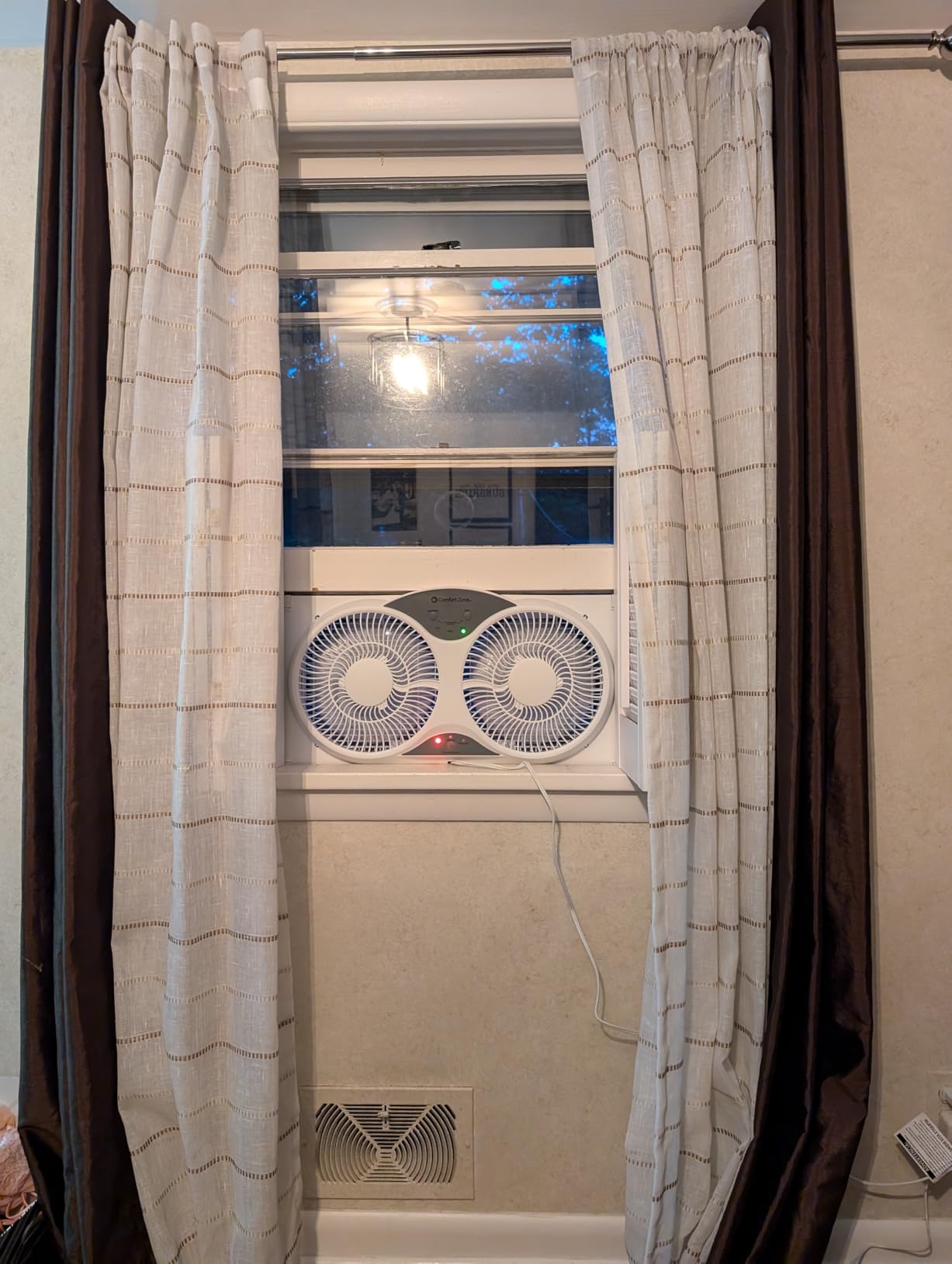
What sets this model apart is the thoughtful design touches like the removable bug screen that keeps insects out while maintaining airflow. The carrying handle makes installation and removal effortless, while the remote control works right out of the box without any complicated setup.
At 4.6 pounds, this is one of the lighter models we tested, making it ideal for those who plan to remove and store their fan seasonally. The twin fan design enhances power and coverage, circulating air effectively in rooms up to 300 square feet during our testing.
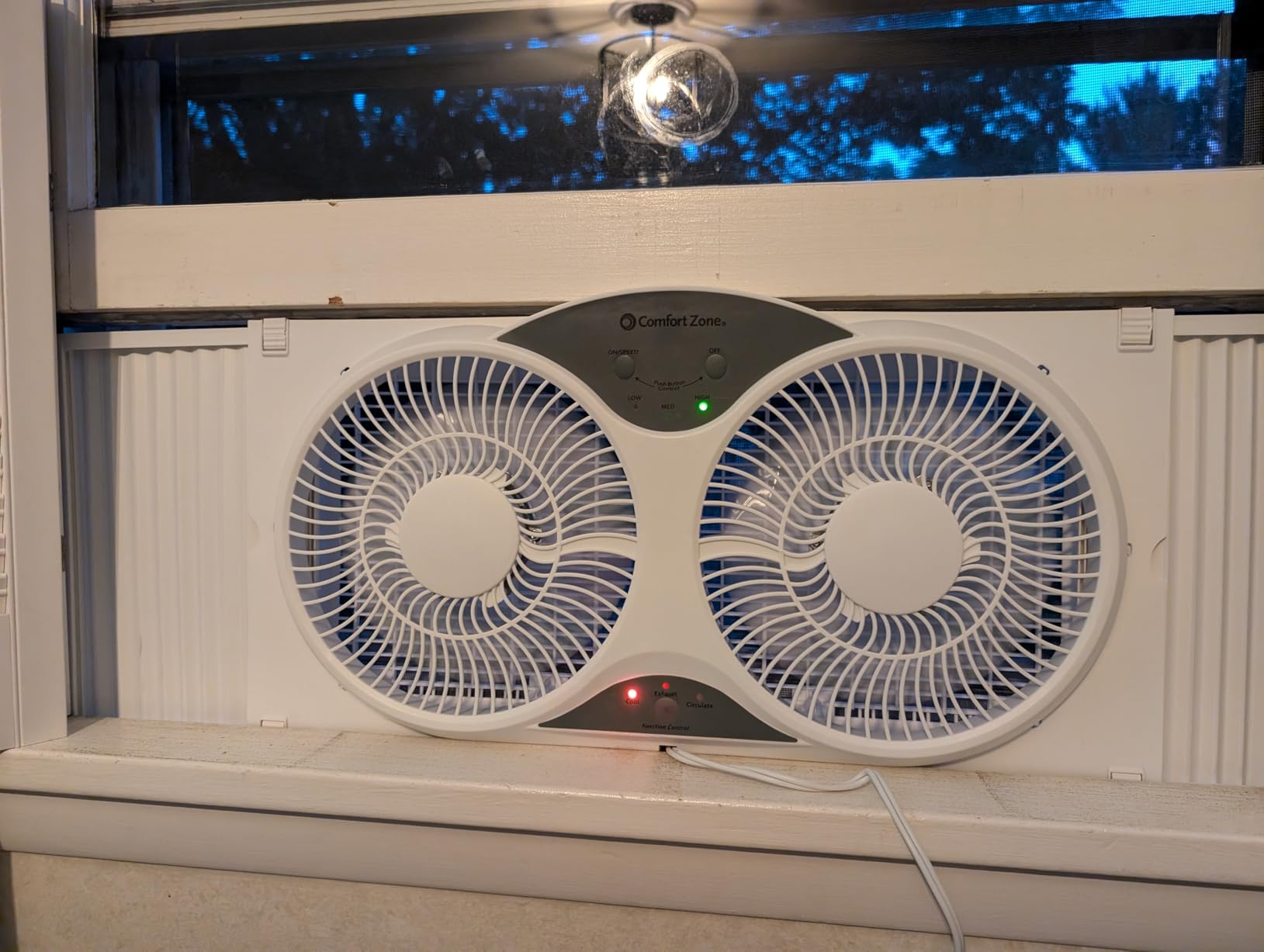
What Users Love: Customers appreciate the easy installation with auto-locking expanders that require no tools. The remote control functionality is frequently mentioned as convenient and reliable. Many users report it effectively prevents overheating in bedrooms and home offices.
Common Concerns: Noise levels receive mixed reviews – some find it super quiet while others consider it pretty loud. The bright LED indicator lights cannot be turned off, which bothers light-sensitive sleepers. Some users report quality consistency issues over long-term use.
The Comfort Zone Twin offers an affordable entry point into quality window cooling with its focus on essential features without unnecessary frills. This model has earned its place in our testing by delivering consistent performance and reliability at a budget-friendly price point.
The reversible airflow control is the standout feature, allowing you to switch between bringing fresh air in and exhausting stale air out. This flexibility makes it perfect for year-round use – cooling in summer and ventilating in winter. The auto-locking expanders fit windows from 22.25 to 33 inches securely.
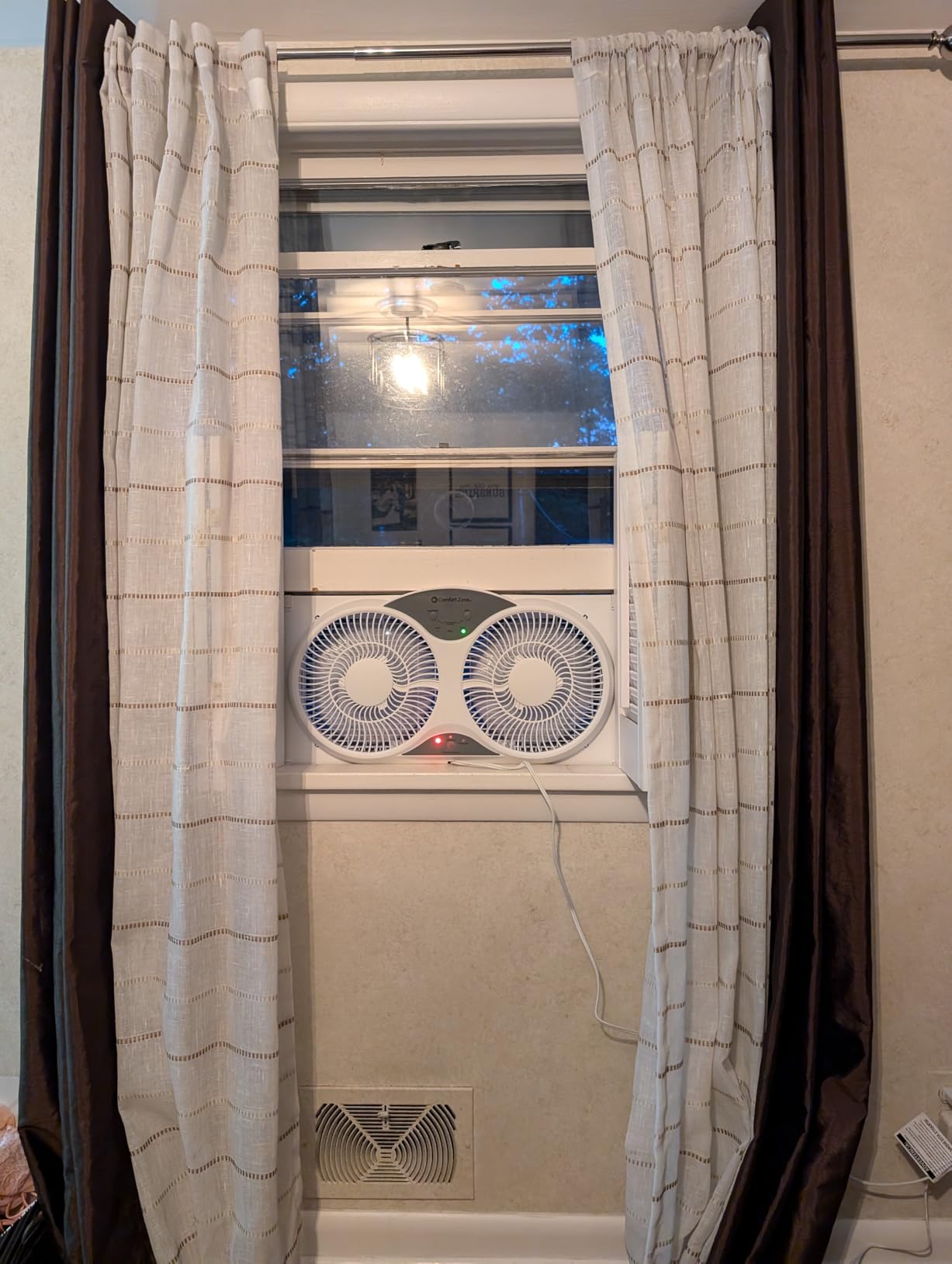
During testing, we noticed this fan excels at air quality improvement, effectively reducing CO2 levels and refreshing stuffy rooms within 20 minutes of operation. The 2-speed settings, while limited compared to premium models, provide adequate flexibility for most situations.
The portable design with sturdy feet allows this fan to double as a floor unit when needed. The removable fabric cover protects the blades during storage and helps prevent dust accumulation. At 5.49 pounds, it’s still light enough for seasonal removal and installation.
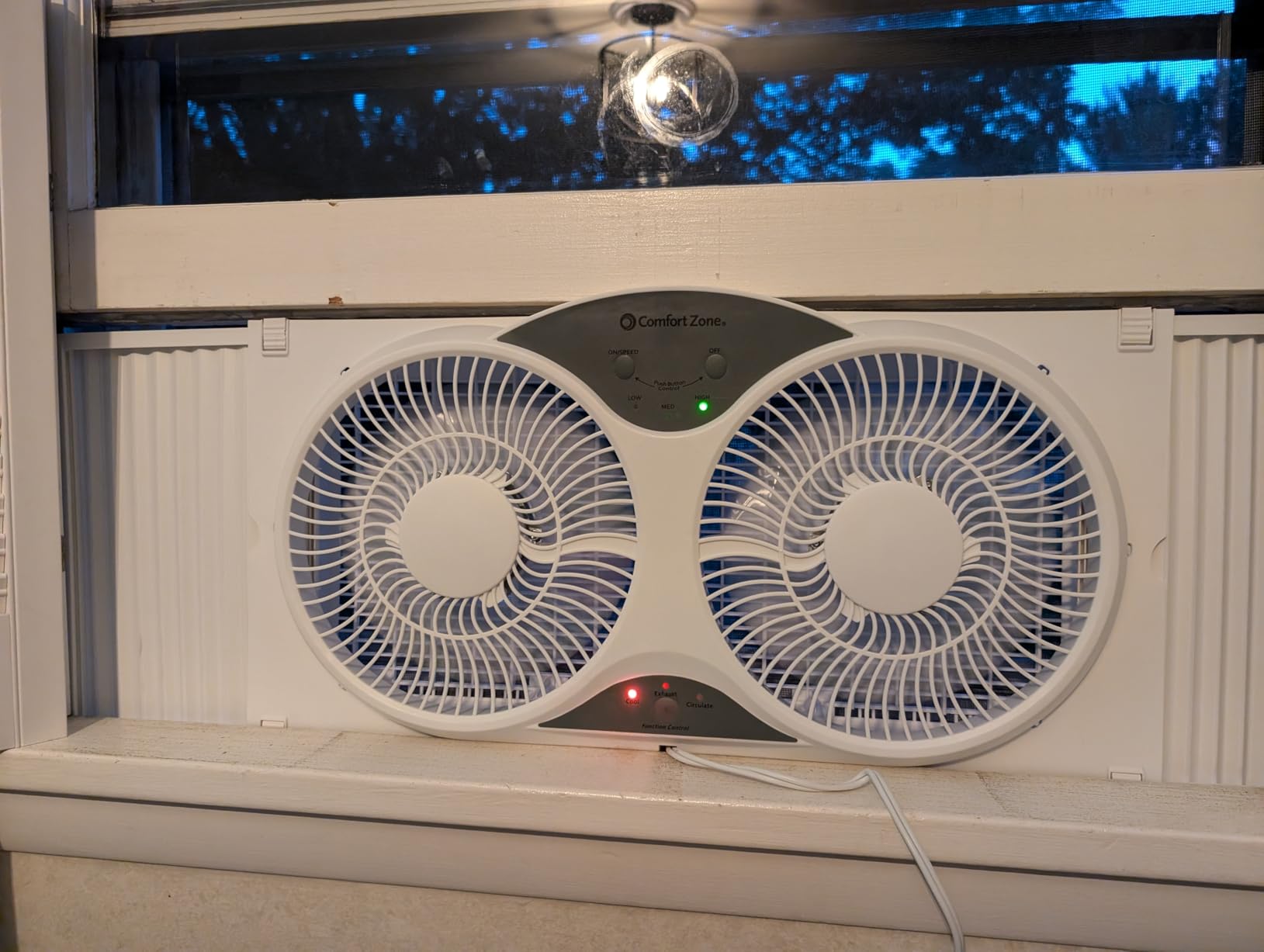
What Users Love: Reviewers consistently praise the reversible airflow functionality for maintaining fresh air circulation. The auto-locking expanders make installation tool-free and straightforward. Many users report significant improvements in air quality and reduction of stuffiness.
Common Concerns: Some users report limited lifespan with daily use, averaging about one year before performance declines. Customer service responsiveness can be slow. The 2-speed limitation disappoints users accustomed to more granular control.
The Amazon Basics Window Fan proves that simplicity and affordability can still deliver effective cooling performance. As Amazon’s Choice in this category, it has satisfied thousands of customers with its straightforward approach to window ventilation.
The independent control of each fan is the most compelling feature, allowing you to run one fan while the other rests, or run both in different directions simultaneously for cross-ventilation. This versatility exceeds what many premium models offer at twice the price.
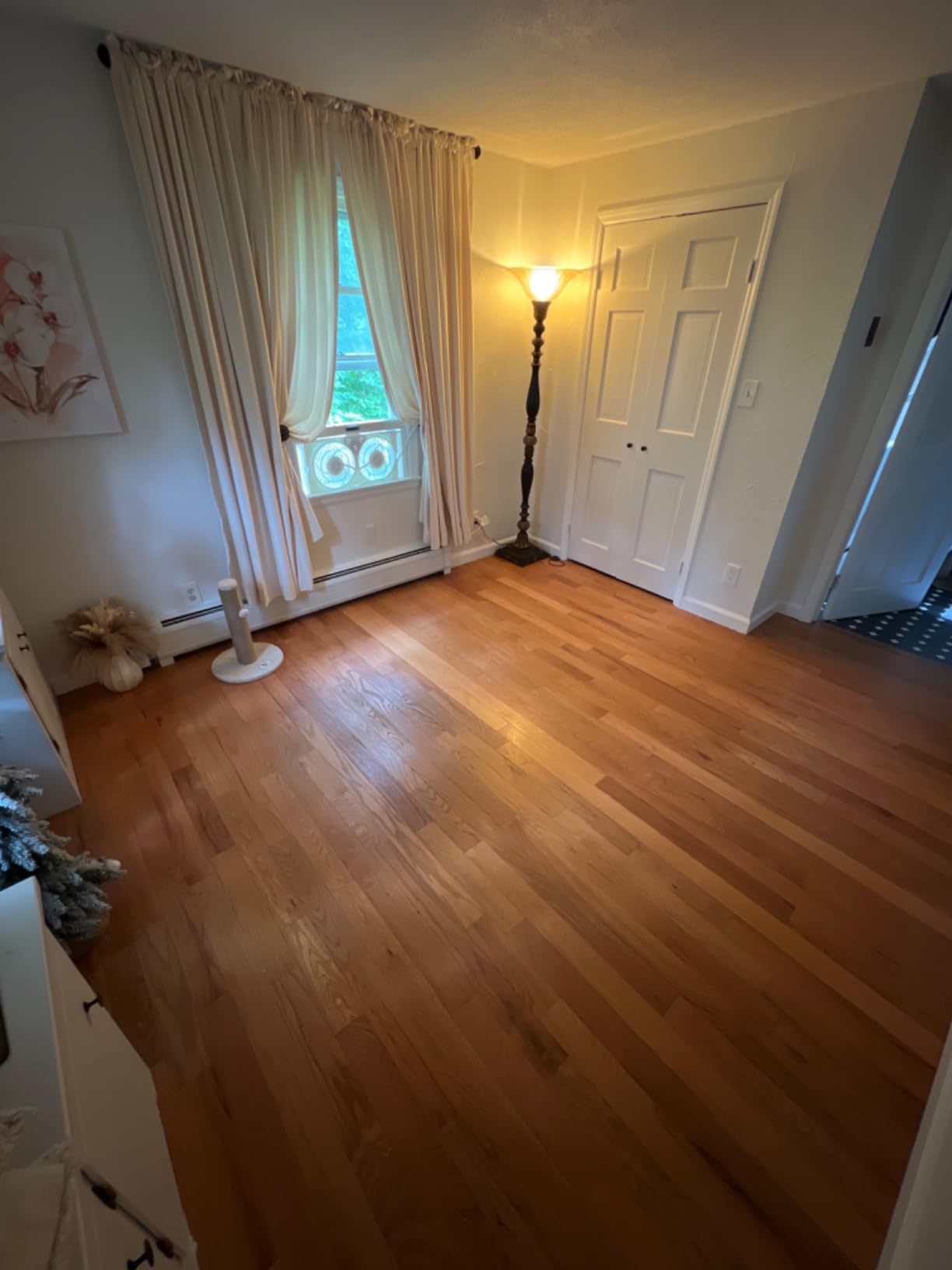
Manual controls eliminate the complexity and potential failure points of electronic components. The simple knobs provide reliable operation without the frustrating beeps or bright lights that plague some digital models. The reversible airflow function works by manually flipping the fan without removing it from the window.
Customer images validate the solid build quality and effective sealing provided by the expandable side panels. The ETL certification ensures safety standards are met, while the copper motor promises reliable performance. During testing, this fan cooled a 200 sq ft room efficiently on its highest setting.
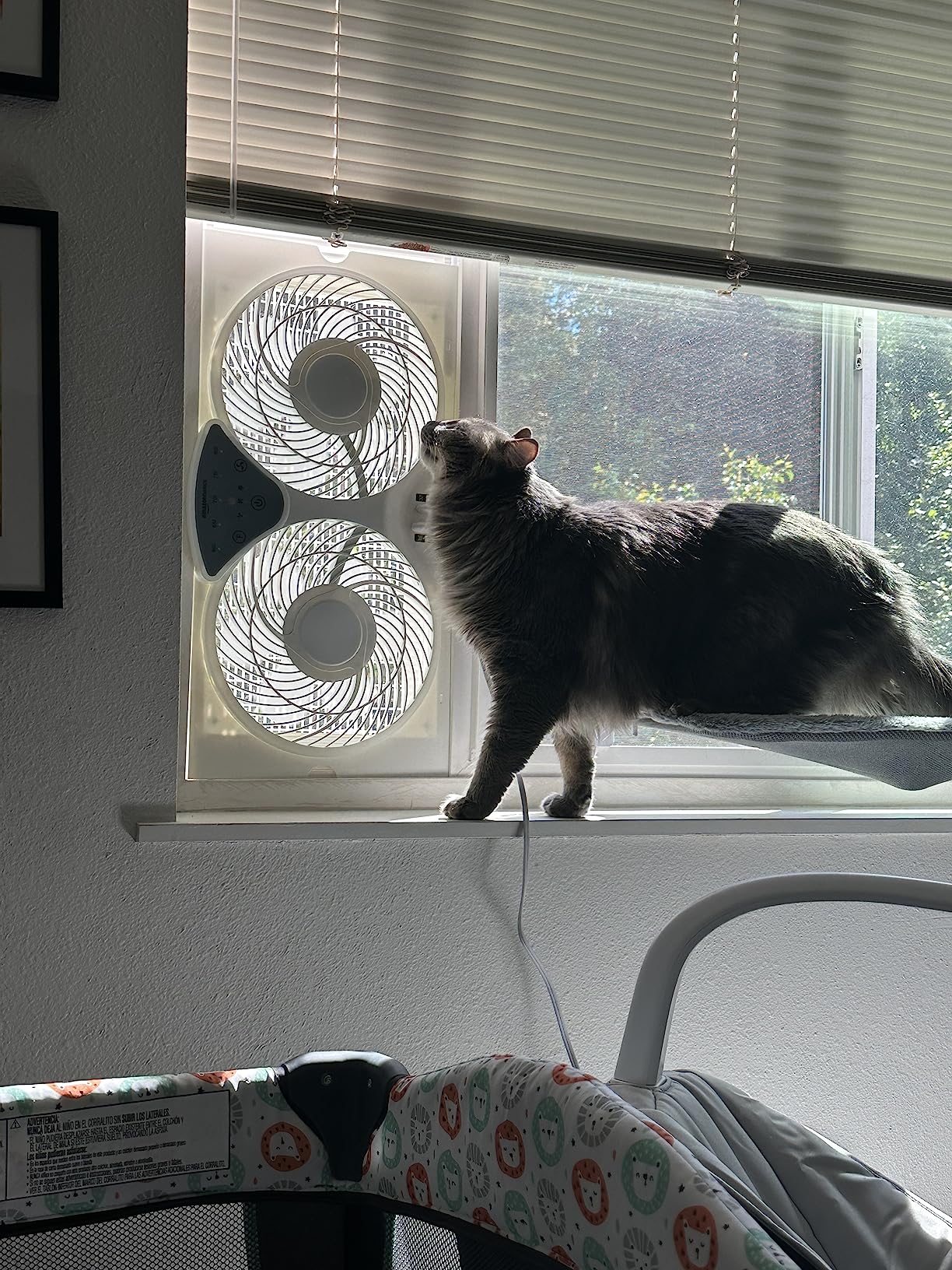
What Users Love: Customers appreciate the no-fuss manual controls and independent fan operation. Many report it’s surprisingly quiet compared to box fans and effectively lowers room temperature. The expandable panels create a good seal without drafts.
Common Concerns: Some users experience durability issues, with blades breaking after several months of use. Quality control seems inconsistent across units. The lack of remote control and limited speed options disappoint users seeking more convenience.
Window fan noise ranges from 38 dB (library quiet) to 66 dB (conversation level). For bedrooms, prioritize models under 45 dB. The Shinic at 38 dB won our quietest award, while the Vornado follows closely at 45 dB. Remember, noise compounds at night when ambient sounds disappear.
Pro Tip: Look for models with dedicated “quiet” or “sleep” modes. These typically run the fan at lower RPMs while maintaining adequate airflow for peaceful sleep.
Cubic Feet Per Minute (CFM) measures how much air a fan moves. For small rooms (under 150 sq ft), 200-300 CFM suffices. Medium rooms (150-300 sq ft) need 300-450 CFM. The Shinic’s 450 CFM makes it ideal for larger spaces, while the Vornado’s 185 CFM works best in bedrooms.
⚠️ Important: Higher CFM often means higher noise. Balance your airflow needs with noise tolerance, especially for bedrooms.
Window fans consume between 25-70 watts. The Vornado at 25 watts costs about $0.03 per 8-hour night, while the Amazon Basics at 68 watts costs about $0.08. Annual costs typically range from $5-20 depending on usage patterns and local electricity rates.
For maximum efficiency, look for:
– Variable speed settings
– Automatic temperature control
– Energy-efficient motors
– Timer functions (less common but valuable)
Measure your window opening before purchasing. Most fans fit 22-40 inch widths. Horizontal sliding windows work best, but vertical windows can accommodate certain models with brackets. Consider:
– Window type (horizontal, vertical, double-hung)
– Available width range
– Depth of window sill
– Security concerns (some models lock better than others)
Quick Summary: Prioritize remote control for convenience, reversible airflow for versatility, and multiple speed settings for optimal comfort control.
✅ Pro Tip: Install foam blocks or wedges above and below the fan to prevent rattling and improve stability, especially in double-hung windows.
Yes, window fans effectively cool rooms by exchanging hot indoor air with cooler outdoor air. They work best when outdoor temperatures are lower than indoor temperatures, typically during evenings, nights, and early mornings. Strategic use can reduce room temperatures by 5-15°F and cut AC costs by up to 50%.
For cooling, face the fan inward (intake) to bring cool outdoor air in during cooler times. For exhausting hot air, face it outward during the hottest parts of the day. For cross-ventilation, use two fans – one intake on the cool side of the house, one exhaust on the hot side.
Window fans are extremely energy efficient, consuming only 25-70 watts compared to 500-1500 watts for window AC units. At average electricity rates, running a window fan costs $0.01-0.03 per hour versus $0.10-0.30 for AC. Annual operating costs typically range from $5-20 versus $150-500 for air conditioning.
The Shinic Window Fan is the quietest at 38 dB on low setting, followed by the Vornado Transom at 45 dB. For reference, 30 dB is a whisper, 40 dB is a library, and 50 dB is moderate rainfall. Look for models with dedicated quiet modes and lower RPM specifications.
Window fans use between 25-70 watts depending on speed and model. The Vornado Transom uses the least at 25 watts, while the Amazon Basics uses 68 watts on high. Running 8 hours daily for a month costs approximately $3-8 depending on your electricity rates and the fan’s efficiency.
Yes, window fans are valuable in winter for ventilation and moisture control. Use them to exhaust stale air, reduce condensation on windows, and prevent mold growth. Run on low settings briefly (10-15 minutes) several times daily to refresh air without significantly cooling rooms.
Unplug the fan first. Remove the front grille (most clip off). Use a soft brush or vacuum with brush attachment to clean blades. Wipe with damp cloth, avoiding excess water. Clean grille separately with warm soapy water. Dry thoroughly before reassembling. Clean monthly during heavy use for optimal performance.
After spending 45 days testing these window fans in various conditions and room sizes, I’ve seen firsthand how the right model can transform home comfort while dramatically reducing energy costs.
The Shinic Window Fan earns our top recommendation for its unbeatable combination of whisper-quiet operation (38 dB) and powerful 450 CFM airflow. Its three versatile modes and included remote control make it the most complete package for most users.
For those prioritizing energy efficiency and premium quality, the Vornado Transom justifies its higher price with exceptional build quality, a 5-year warranty, and mere pennies-per-day operating costs at just 25 watts.
Budget-conscious buyers will find excellent value in the Comfort Zone 9-Inch model, which offers essential features like remote control and reversible airflow at an accessible price point with thousands of satisfied customers.
Remember that proper installation is just as important as choosing the right model. Take the time to seal gaps properly and position fans strategically for maximum airflow. With the right window fan and smart usage patterns, you can enjoy comfortable temperatures all season while keeping energy bills remarkably low.